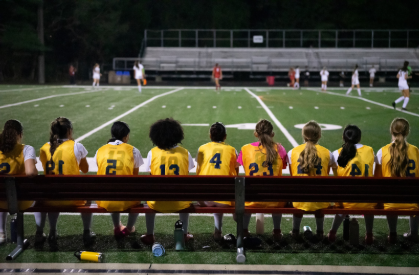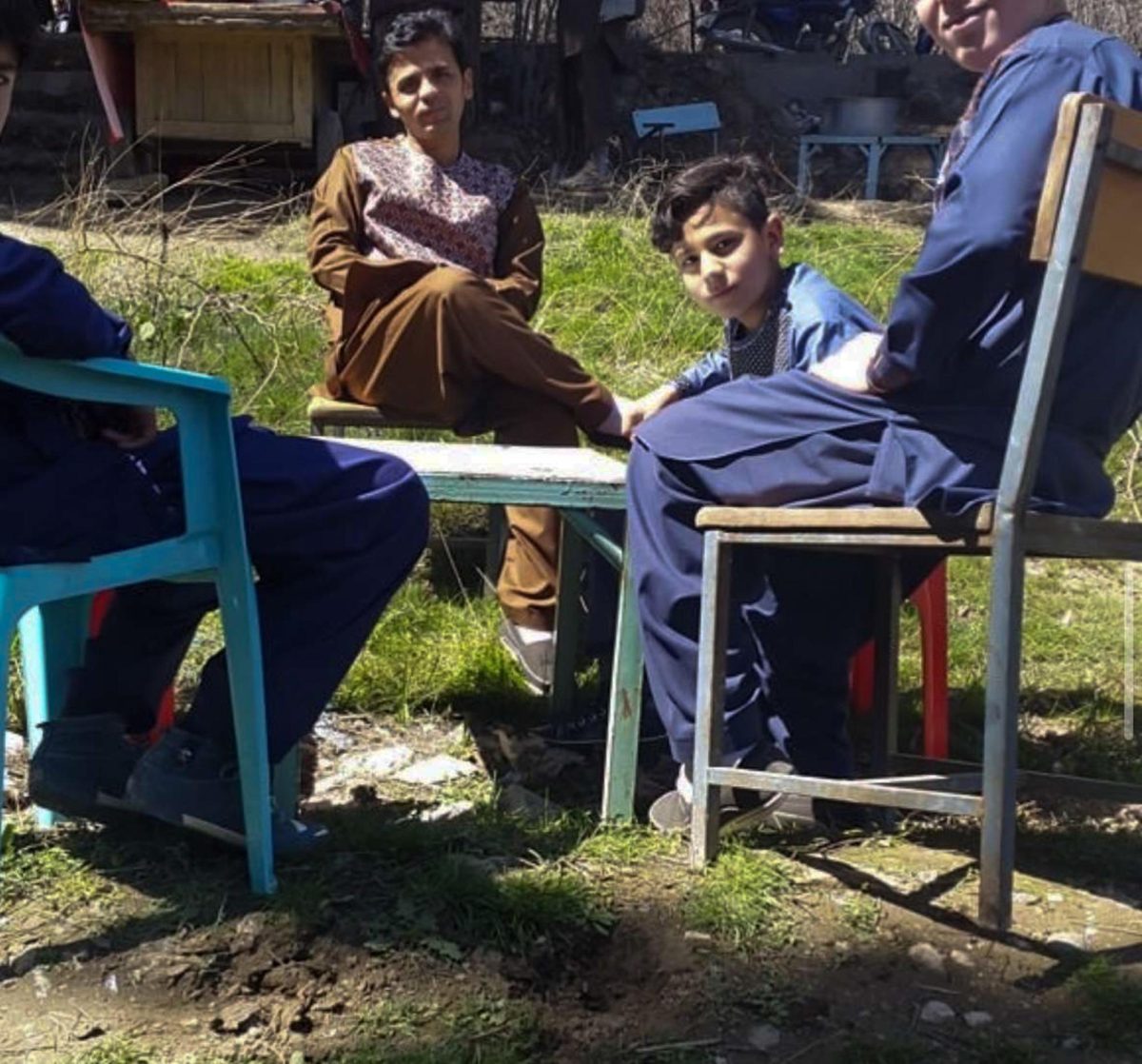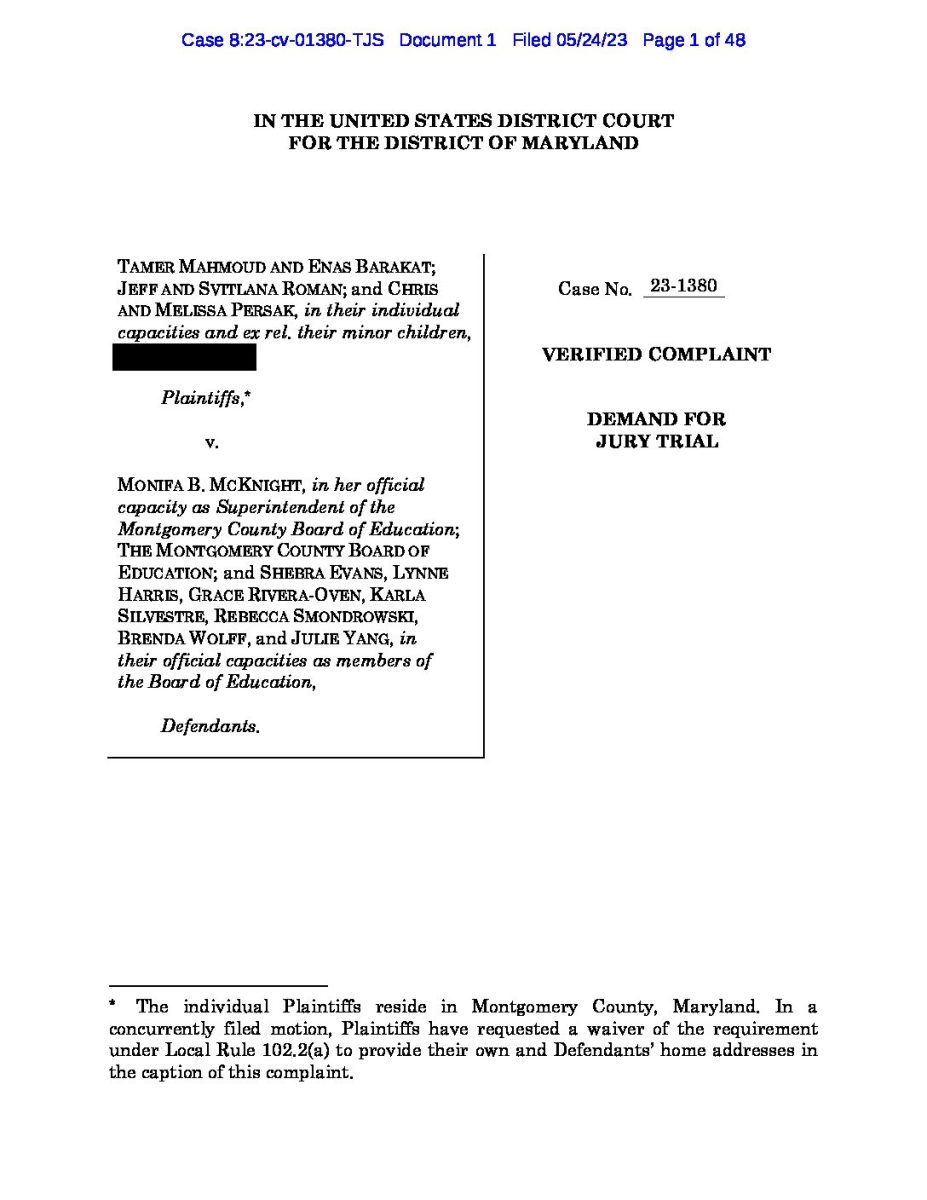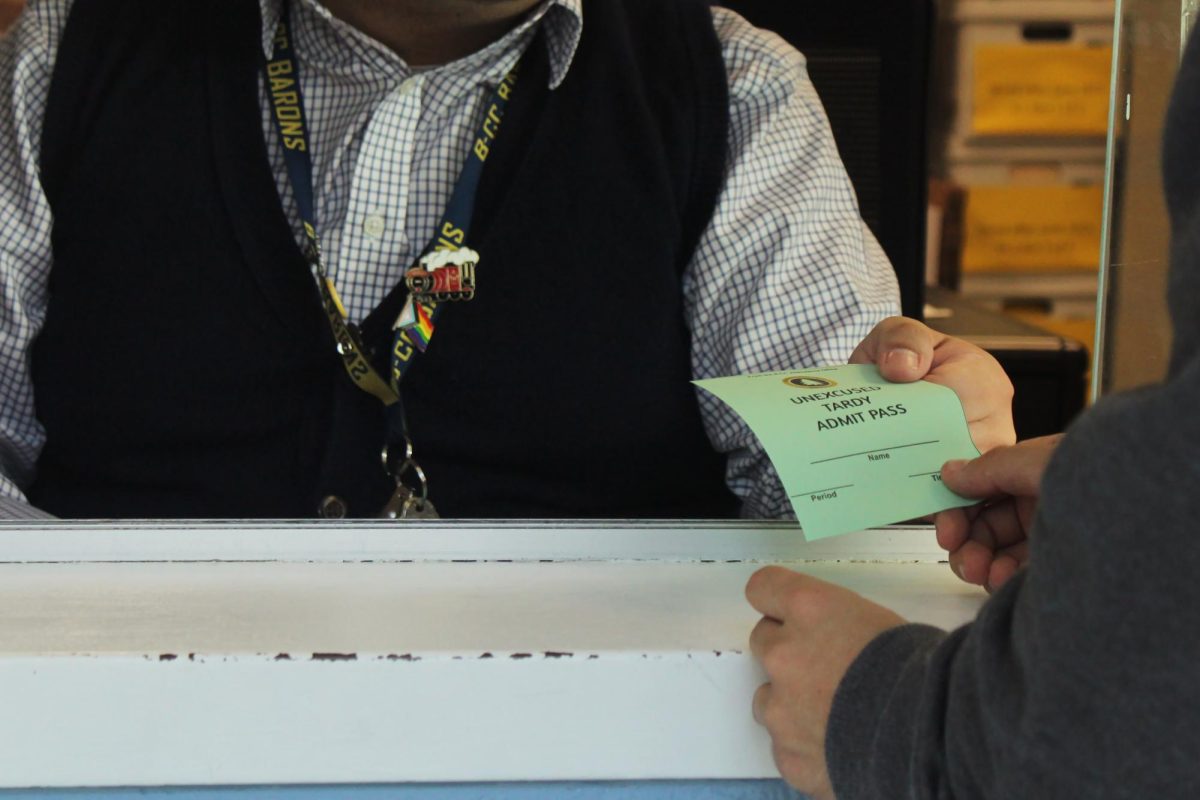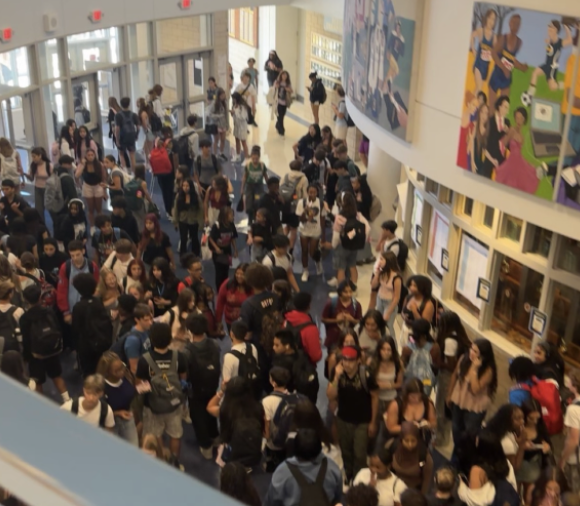Attendance data presented by Dr. Mooney at the Oct. 16 Instructional Learning Team (ILT) indicated that, so far this school year, 38.4% of chronically absent students at B-CC are Hispanic. (Hispanic and Latino describe different identities, however, MCPS and B-CC data refer to both groups as Hispanic. We will use Hispanic to represent both.) The rate of schoolwide chronic absenteeism for the same time period is 17%, lower than the rate at this time last year.
By the end of the 2022-2023 school year, B-CC’s chronic absenteeism rate was 28%, on par with the countywide average of 27%, according to MCPS data. However, the rate for students who identified as Hispanic at B-CC was 34.4%, suggesting that these students were disproportionately absent. This trend has persisted this year.
MCPS defines chronic absenteeism as absences for 10% or more of school days, including excused absences. If a student misses two to three classes they are considered absent for a half day. Four or more classes are considered a full-day absence.
From qualitative and quantitative data collected last year from sources such as student and staff voice surveys, and discipline and attendance reports, administration aggregated the following takeaways: many Hispanic students do not feel engaged in their classes and do not always feel as if they belong. They may lack significant relationships with staff. Additionally, Hispanic students are more frequently referred to administration than other racial or ethnic groups and reported experiencing implicit biases.
Administration is focused on discovering the unique circumstances behind each student’s absences. Ms. Rizkallah, an assistant principal, said “[I think] students are absent for various reasons, and the one way to improve attendance is by learning the story of all our students.” For many chronically absent students, the reasoning behind their absences is unknown. At the October ILT meeting, potential reasons under discussion were students taking jobs to support themselves or their families, students tending to their younger siblings, or simply a lack of desire to be at school. Despite the daunting numbers, B-CC staff are committed to finding answers. Mr. Gysberts, B-CC’s Pupil Personnel Worker (PPW), along with administration and counseling, recognize that no solutions will be one-size-fits-all. Mr. Gysberts said, “If you are not attending, then we will attend to you. That is our philosophy.”
Traditionally, attendance matters fall under the purview of the B-CC Student Wellbeing team, who take time in meetings to drill down on student data, reach out to connect with parents and help alleviate the root causes. For Emergent Multilingual Learners (EML), a majority of whom are Hispanic, according to the 2022-2023 school profile, the Parent Community Coordinator reaches out to parents to discuss attendance and its importance. Mr. Gysberts explained “If you miss three days a week, which is more than half of the week, you are missing out on half your school[ing] over time. So, we are working on educating parents and emphasizing that every day and minute really counts.”
Mr. Webster, an English Language Development (ELD) teacher, explained “I try to give every opportunity [to students] to get the best grades possible, even when they miss a few days, however, generally [those with the] lowest attendance have the lowest grades, and if a student has a really good attendance they have a better chance of getting higher grades.”
Attendance appears to have a correlation, at least in part, to academic achievement at B-CC. After combining student performance data in math and literacy, administration noticed that Hispanic students are showing the least amount of growth in math and literacy. In the first semester last year, only 56% of Hispanic students met the Evidence of Learning (EOL) classroom measure for math, and only 47% met this measure in second semester. Administration’s goal for this year is to have at least 61% of Hispanic students in first semester and at least 52% of students in second semester meet the EOL classroom measure for math and that 78% of Hispanic students meet the EOL classroom measure by the end of the 2023-2024 school year.
Students who are chronically absent are less likely to meet the minimum 2.0 unweighted GPA and a maximum of one failing class needed to participate in extracurricular activities, which is a main motivator for many students to attend school.
Mr. Gysberts said, “It just seems there are fewer [alternative] options available [for] those students who may not be interested in traditional school.” With the Maryland dropout age at 16, some students feel like dropping out is their only option if they do not want to continue in the traditional high school model.
Mr. Webster said, “I believe having a more diversified range of trainings and opportunities may incentivize students to have better attendance, especially because college is not for everyone.”
Administration hopes to address chronic absenteeism through a multi-tiered approach. They aim to increase feedback to faculty by 10% compared to last year, particularly in the areas of school culture and climate, with an emphasis on increasing the sense of belonging of Hispanic students. They will also give staff professional development in the areas of relationship building, classroom-managed behaviors, progressive discipline measures, and the entry of discipline referrals when necessary. Regarding well-being, administration plans to promote overall well-being by providing faculty and students with opportunities like Well-Being Wednesdays, Baron Time Weeks, Homework-Free Weekends, and a Student Well-Being Team process. The hope is that with this approach, students will begin to be excited about attending school and the opportunities afforded to them at B-CC.
Administration will use attendance and student voice data to measure improvements in well-being at the end of the year and hopes these practices will result in a 5% decrease in chronic absenteeism and a 5% increase in student sense of belonging on student voice data, in particular for Hispanic students.






